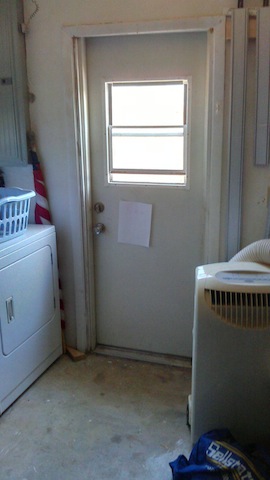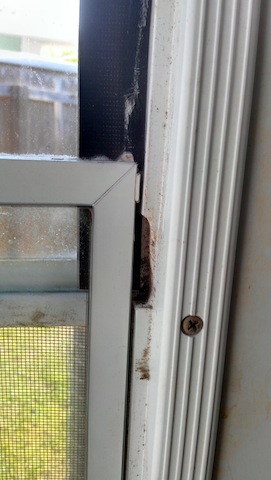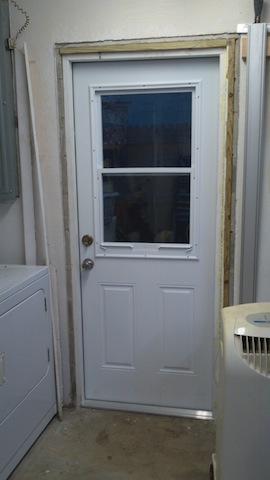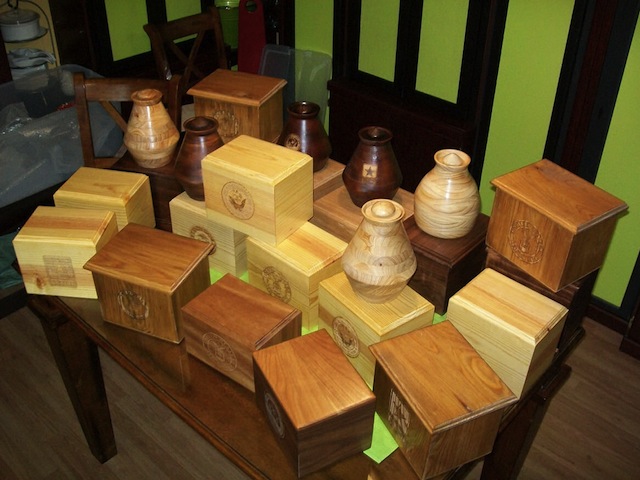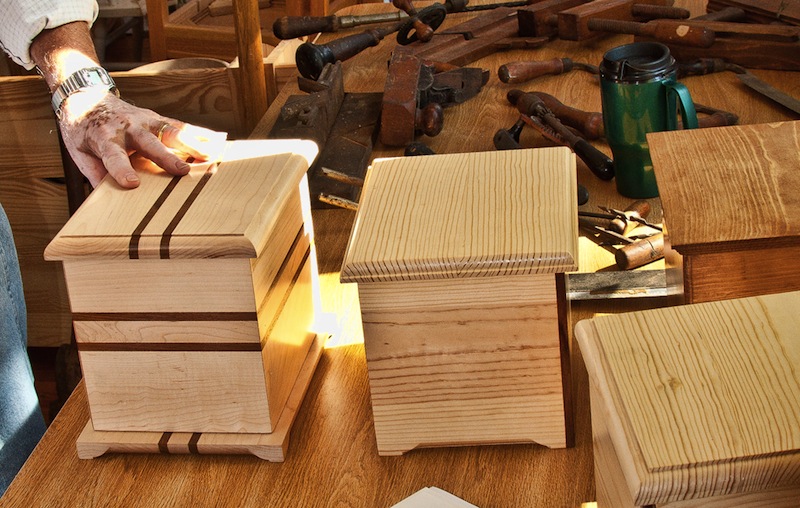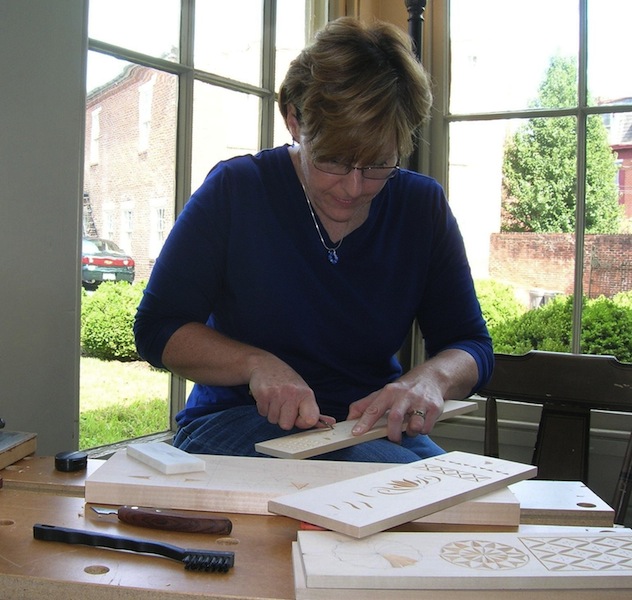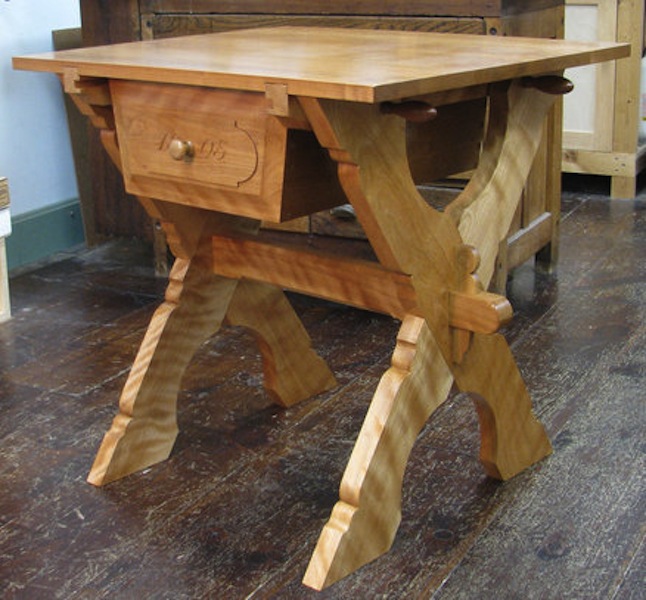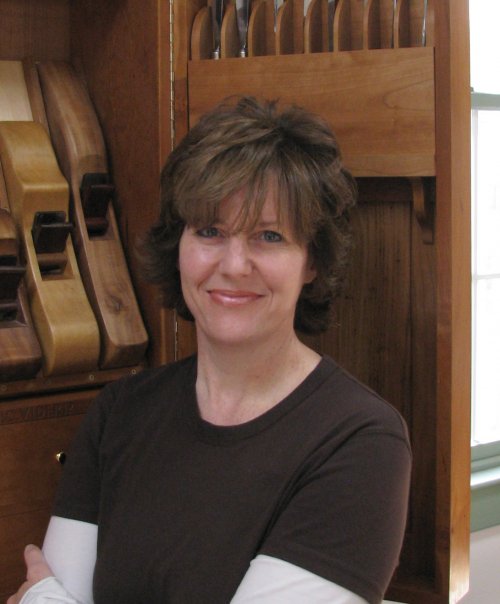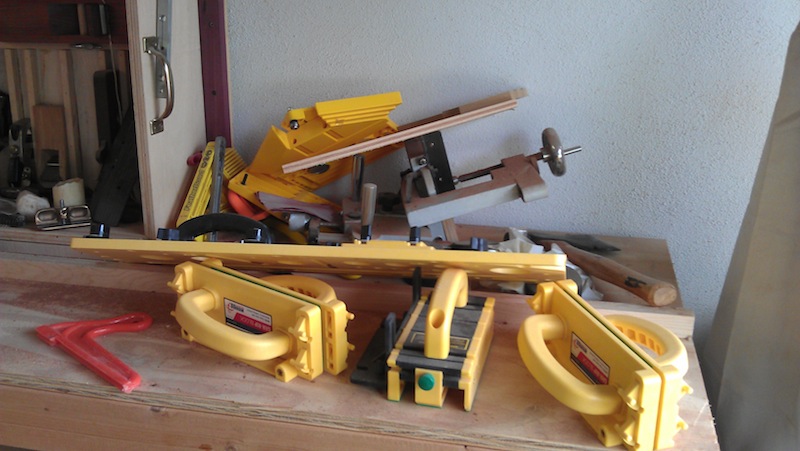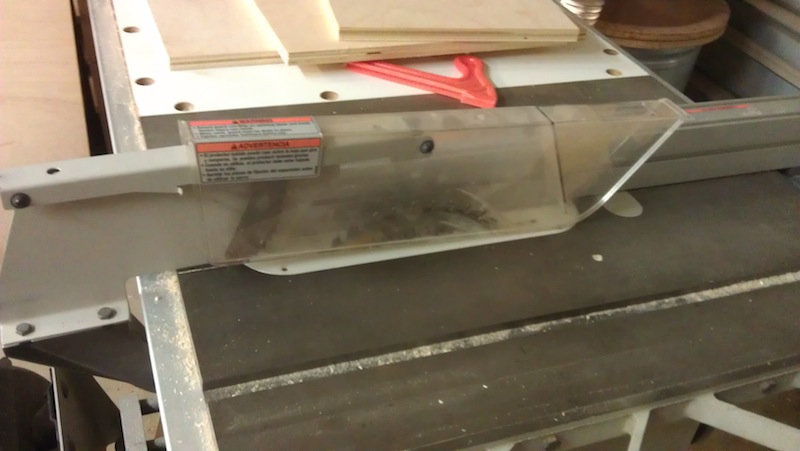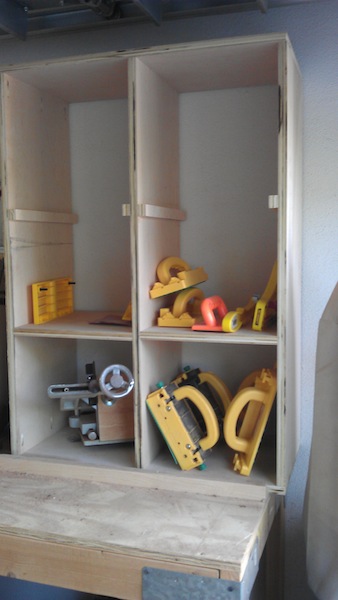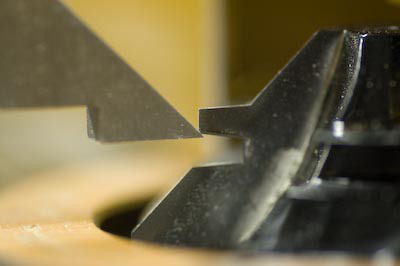My shop is in my garage… You know this.
And, when the weather is pleasant enough to get some low-humidity breezes, its a real pleasure to open the front garage door and flood the shop with light. But, sometimes that also floods the shop with mosquitoes and other flying insects. So, maybe it’s not the best idea to open the big garage door.
I could open the side door, but I have to remember to use a wedge to keep it from flying shut if a breeze comes along – and I’m back to the mosquito issue I mentioned before.
That’s why many years ago, I replaced the rotting, solid wooden door with a steel model that had a working window in it. This way, I could open the window to allow the breezes to blow through the screen, and shut everything up when I was done with it. I also discovered that when I put my portable air conditioner unit’s heat exhaust hose out the screen, I could cool the shop pretty well, making summer woodwork a more pleasant happening.
Unfortunately, the old door was about as cheap as possible, and the plastic window frame for the tiny window broke out – to the point where I was relying on good old fashioned duct tape to hold the glass in. That wasn’t acceptable anymore.
So, I went off to the local home improvement emporium and got a new door. This one is far more secure than the old model, and a whole lot more decorative.
The window is much larger, and meets hurricane codes for wind load. That’s a good thing, given where I live. The setup is beefier than the old door’s window, providing a 20 year warranty on the sucker. Not bad. Plus, it’s tracks work very well, making it easy to open as much as I need to, and will prevent the air conditioner hose and fitting from sliding out of the window, making a nicer seal with the door. All I need to do is trim it out, and we are done, ready for years of service.
Sure, it wasn’t a woodworking improvement. But, as far as climate control and security are concerned, this is a real keeper!

